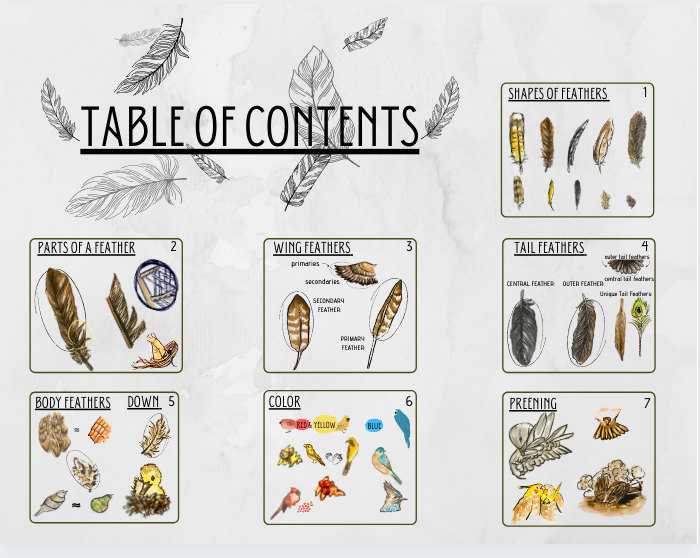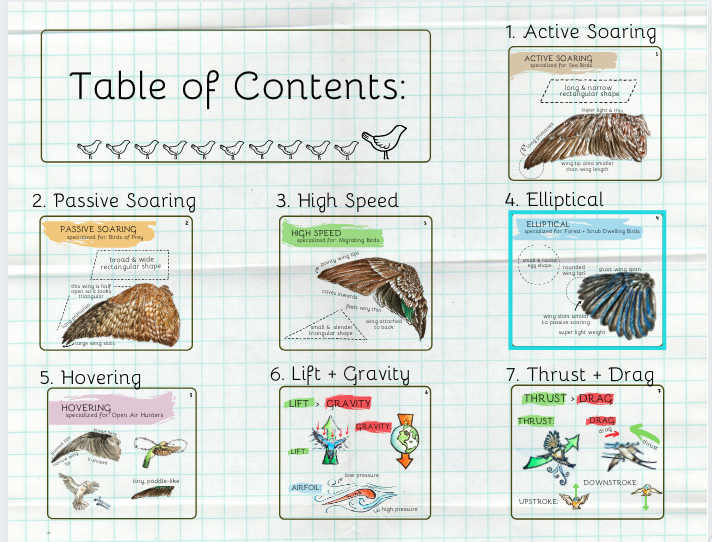 INSPIRATION
INSPIRATION
 How do I discover my passion? Like many of the previous students awarded the Webster Fellowship, I was first inspired by my environmental studies classes at UCSC and the internship opportunities offered to me through the ENVS department. Last year, I spent a quarter interning with the Bird School Project, which is an outdoor education program started by UCSC alum, Kevin Condon. I was inspired by how the simple act of teaching kids to observe birds opened the door to the natural world for both me and the students. Furthermore, I found the intersections of my passions of teaching, illustrating, and being outside with nature.
How do I discover my passion? Like many of the previous students awarded the Webster Fellowship, I was first inspired by my environmental studies classes at UCSC and the internship opportunities offered to me through the ENVS department. Last year, I spent a quarter interning with the Bird School Project, which is an outdoor education program started by UCSC alum, Kevin Condon. I was inspired by how the simple act of teaching kids to observe birds opened the door to the natural world for both me and the students. Furthermore, I found the intersections of my passions of teaching, illustrating, and being outside with nature.
 But during my weeks in the classroom, I noticed some difficulties with the field guides. First, they used scientific vocabulary that made it harder for young students to connect with. Second, the lack of images was a disadvantage because most students are visual learners. Images also help the students for whom English is a second language, and inspires students to be creative with their field notes. I found that my example field notes made the students more motivated in their field journaling. That’s when I had an idea: to use my artistic skills to make my own version of field guides tailored to the Bird School Project’s curriculum.
But during my weeks in the classroom, I noticed some difficulties with the field guides. First, they used scientific vocabulary that made it harder for young students to connect with. Second, the lack of images was a disadvantage because most students are visual learners. Images also help the students for whom English is a second language, and inspires students to be creative with their field notes. I found that my example field notes made the students more motivated in their field journaling. That’s when I had an idea: to use my artistic skills to make my own version of field guides tailored to the Bird School Project’s curriculum.
PROJECT
 To get the best references for my illustrations, I borrowed preserved specimens from the Norris Center. Over the course of 10 weeks, I sketched, painted, and scanned my illustrations onto Canva, a digital document creating site. I worked extensively with Kevin to create an image-based field guide that was fun to look at and incited curiosity. I drew over fifty illustrations for the Wings and Feather guides.
To get the best references for my illustrations, I borrowed preserved specimens from the Norris Center. Over the course of 10 weeks, I sketched, painted, and scanned my illustrations onto Canva, a digital document creating site. I worked extensively with Kevin to create an image-based field guide that was fun to look at and incited curiosity. I drew over fifty illustrations for the Wings and Feather guides.
During the illustration process, I ran into some problems. It was difficult to decide what drawings were important to include on the page. I had to put myself in the position of both the student and the teacher. Another challenge was to make the pictures tell a story while also being relevant in the field. I often fell into the trap of relying on words instead of pictures. I learned how complex concepts like flight and color could be really challenging to illustrate and explain succinctly. In the end, I gained a whole new level of respect for nature illustrators.
THE FINAL PRODUCT
 I created two field guides for the Bird School Project to use in their classroom and field activities. These fun and easy-to-understand guides illustrate bird wings and feathers . Through this project, I gained a better understanding of myself as an observer of nature and illustrator. Bird watching is a practice that tunes one’s senses to the rhythm and symphony of the natural ecosystem. My illustrations will be useful to anyone wanting to gain a better understanding of birds and how to identify feathers. The wing guide and the feather guide are freely available on the Norris Center website for anyone to use.
I created two field guides for the Bird School Project to use in their classroom and field activities. These fun and easy-to-understand guides illustrate bird wings and feathers . Through this project, I gained a better understanding of myself as an observer of nature and illustrator. Bird watching is a practice that tunes one’s senses to the rhythm and symphony of the natural ecosystem. My illustrations will be useful to anyone wanting to gain a better understanding of birds and how to identify feathers. The wing guide and the feather guide are freely available on the Norris Center website for anyone to use.
 I would like to thank Kevin Condon for the amazing opportunities BSP has offered me. I would also like to thank Jenny Keller, Spencer Klinefelter, and the BEETLES team for their invaluable feedback during my design process. Lastly, I could not have done this without the support of Professor Karen Holl, Chris Lay, and Alex Krohn. I’m very grateful to the Norris Center for sponsoring this project and hope many students can take advantage of their generosity. Thank you for allowing me to explore my passions and learn more about the natural world.
I would like to thank Kevin Condon for the amazing opportunities BSP has offered me. I would also like to thank Jenny Keller, Spencer Klinefelter, and the BEETLES team for their invaluable feedback during my design process. Lastly, I could not have done this without the support of Professor Karen Holl, Chris Lay, and Alex Krohn. I’m very grateful to the Norris Center for sponsoring this project and hope many students can take advantage of their generosity. Thank you for allowing me to explore my passions and learn more about the natural world.
